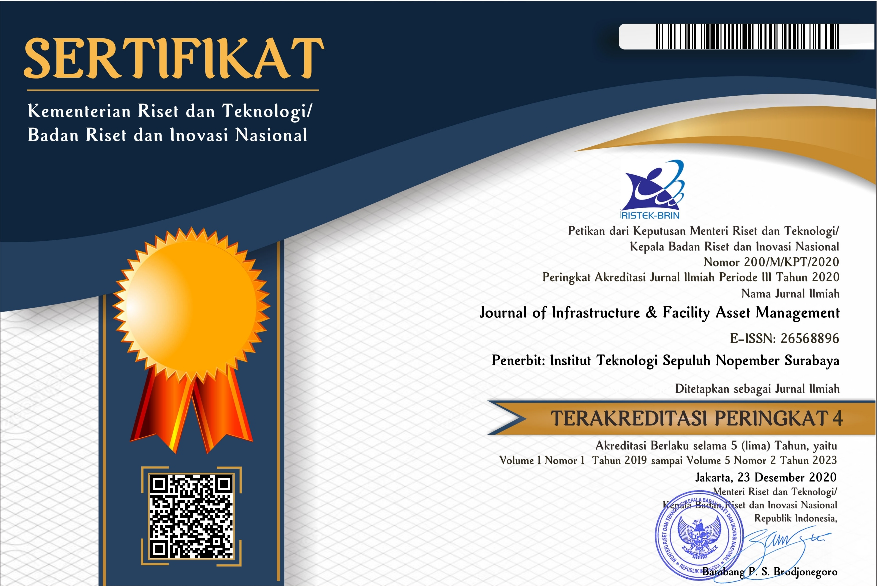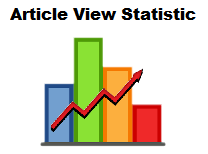Irrigation Water Management by Using Remote Sensing and GIS Technology to Maintain the Sustainability of Tourism Potential in Bali
Abstract
This paper reviews the literature on the potential use of remote sensing and GIS technology in irrigation water management to support the preservation of the Subak irrigation system in Bali. Subak is a system that has survived for a very long time faces challenges in irrigation water management. Remote sensing technology provides an opportunity to get identification, analysis, and monitoring of land use, irrigation area, irrigation infrastructures, water supply source, water use, crop type, water rights, irrigation scheduling, yield estimates, nursery monitoring, crop disease detection, evaluate fruit maturity, and detection of bruises on fruit. The integration of remote sensing technology and GIS is expected to be able to make irrigation infrastructure assets and water management more effective and efficient.
Full Text:
PDFReferences
Aldrian, E., & Dwi Susanto, R. (2003). “Identification of three dominant rainfall regions within Indonesia and their relationship to sea surface temperature”. International Journal of Climatology, 23(12), 1435–1452. https://doi.org/10.1002/joc.950
Ayehu, G. T., Tadesse, T., Gessesse, B., & Dinku, T. (2018). “Validation of new satellite rainfall products over the Upper Blue Nile Basin, Ethiopia”. Atmospheric Measurement Techniques, 11(4), 1921–1936. https://doi.org/10.5194/amt-11-1921-2018
Bastiaanssen, W. G. M., Molden, D. J., & Makin, I. W. (2000). “Remote sensing for irrigated agriculture: Examples from research and possible applications”. Agricultural Water Management, 46(2), 137–155. https://doi.org/10.1016/S0378-3774(00)00080-9
Bello, M. M., Nasidi, N. M., & Shanono, N. J. (2014). “Remote Sensing as a Tool for Irrigation Water Management”. The 1st International Conference on Drylands, 56–60. Kano : Centre for Dryland Agriculture.
BPS. (2018). Bali Province in Figures 2018. Denpasar: BPS - Statistics of Bali Province.
Budiasa, I. W., & Ambarawati, I. G. A. A. (2014). “Community-Based Agro-tourism as an Innovative Integrated Farming System Development Model Towards Sustainable Agriculture and Tourism in Bali”. Journal of the International Society for Southeast Asian Agricultural Sciences, 20(1), 29–40.
BWSBP. (2017). Desain Peningkatan / Rehabilitasi Infrastruktur Jaringan Irigasi DAS Tk. Unda dan DAS Tk. Petanu. Balai Wilayah Sungai Bali Penida. Denpasar.
Cruz-Blanco, M., Lorite, I. J., & Santos, C. (2013). “An Innovative Remote Sensing based Reference Evapotranspiration Method to Support Irrigation Water Management under Semi-arid Conditions”. Agricultural Water Management, 131, 135–145. https://doi.org/10.1016/j.agwat.2013.09.017
Farg, E., Arafat, S., Abd El-Wahed, M. S., & El-Gindy, A. (2017). “Evaluation of water distribution under pivot irrigation systems using remote sensing imagery in eastern Nile delta”. Egyptian Journal of Remote Sensing and Space Science, 20, S13–S19. https://doi.org/10.1016/j.ejrs.2016.12.001
Fowler, P. J. (2003). Word Heritage Papers 6: World Heritage Cultural Landscapes 1992-2002. Paris.
Ishimwe, R., Abutaleb, K., & Ahmed, F. (2014). “Applications of Thermal Imaging in Agriculture-A Review”. Advances in Remote Sensing, 03(03), 128–140. https://doi.org/10.4236/ars.2014.33011
Ismail, M., Abdel Ghaffar, M. K., & Azzam, M. A. (2012). “GIS application to identify the potential for certain irrigated agriculture uses on some soils in Western Desert, Egypt”. Egyptian Journal of Remote Sensing and Space Science, 15(1), 39–51. https://doi.org/10.1016/j.ejrs.2012.03.001
Kumar, A., Dubey, O. P., & Ghosh, S. K. (2014). “GIS-Based on Irrigation Water Management. International Journal of Research in Engineering and Technology, 3(14), 62–65. Retrieved from http://www.ijret.org
Lanya, I., Subadiyasa, N. N., Sardiana, K., & Adi, G. P. R. (2015). “Numerical Classification, Subak Zoning and Land Transfer Function Rice Field in the Province of Bali Based on Remote Sensing and GIS”. Procedia Environmental Sciences, 24, 47–55. https://doi.org/10.1016/j.proenv.2015.03.008
Madushanki, A. A. R., Halgamuge, M. N., Wirasagoda, W. A. H. S., & Syed, A. (2019). “Adoption of the Internet of Things (IoT) in agriculture and smart farming towards urban greening: A review”. International Journal of Advanced Computer Science and Applications, 10(4), 11–28.
Maulana, M. A., Suprayitno, H., & Soemitro, R. A. A. (2019). “Preliminary Recognition of River Infrastructure”. Journal of Infrastructure & Facility Asset Management, 1(1), 1-9.
Mitchell, B. (1994). “Sustainable Development at the Village Level in Bali, Indonesia”. Human Ecology, 22(2), 189–211. https://doi.org/10.1007/BF02169039
Norken, I. N., Suputra, I. K., & Arsana, I. G. N. K. (2015). “Water Resources Management of Subak Irrigation System in Bali”. Applied Mechanics and Materials, 776, 139–144. https://doi.org/10.4028/www.scientific.net/amm.776.139
Roth, D. (2011). “The Subak in Diaspora: Balinese Farmers and the Subak in South Sulawesi”. Human Ecology, 39(1), 55–68. https://doi.org/10.1007/s10745-010-9374-7
Senay, G. B., Schauer, M., Friedrichs, M., Velpuri, N. M. & Singh, R. K. (2017). “Satellite-based water use dynamics using historical Landsat data (1984–2014) in the southwestern United States”. Remote Sensing of Environment, 202, 98–112. https://doi.org/10.1016/j.rse.2017.05.005
Setiawati, M. D., Miura, F., & Aryastana, P. (2016). “Validation of Hourly GSMaP and Ground base Estimates of Precipitation for Flood Monitoring in Kumamoto, Japan”. In P. K. Srivastava, P. C. Pandey, P. [22} Kumar, A. S. Raghubanshi, & D. Han (Eds.), Geospatial Technology for Water Resource Applications (pp. 130–143). https://doi.org/10.1201/9781315370989
Sørdalen, T. K. (2011). A Traditional Irrigation System in Bali ; a Study of its Transferability to Flores. The University of Agder.
Suprayitno, H., & Soemitro, R. A. A. (2018). “Preliminary Reflexion on Basic Principle of Infrastructure Asset Management”. Journal of Infrastructure & Facility Asset Management, 2(1), 1-9.
Sutawan, N. (2004). “Tri Hita Karana and Subak In Search for Alternative Concept of Sustainable Irrigated Rice Culture”. INWEPF, 1–11.
Xu, R., Tian, F., Yang, L., Hu, H., Lu, H., & Hou, A. (2017). “Ground validation of GPM IMERG and TRMM 3B42V7 rainfall products over southern Tibetan plateau based on a high-density rain gauge network”. Journal of Geophysical Research, 122(2), 910–924. https://doi.org/10.1002/2016JD025418
Yekti, M. I., Schultz, B., Norken, I. N., & Hayde, L. (2017). “Discharge Analysis for a System Approach to River Basin Development with Subak Irrigation Schemes as a Culture Heritage in Bali”. Agricultural Engineering International: CIGR Journal, 19(1), 33–44.
Yuliana, E. D. (2015). “Renewable Irrigation System in the Land Rice Field of Subak in Bali”. Academic Research International, 6(2), 38–43.
Yuliana, E. D. (2017). “SUBAK : Traditional Irrigation Organization A Cultural Representation of Agriculture in Bali”. International Journal of Contemporary Research and Review, 08(06), 20179–20185. https://doi.org/10.15520/ijcrr/2017/8/05/180
DOI: http://dx.doi.org/10.12962%2Fjifam.v2i1.6965
Refbacks
- There are currently no refbacks.
Visitor :
Flag Counter

Journal Of Infrastructure & Facility Asset Management by Institut Teknologi Sepuluh Nopember is licensed under a Creative Commons Attribution-ShareAlike 4.0 International License.





